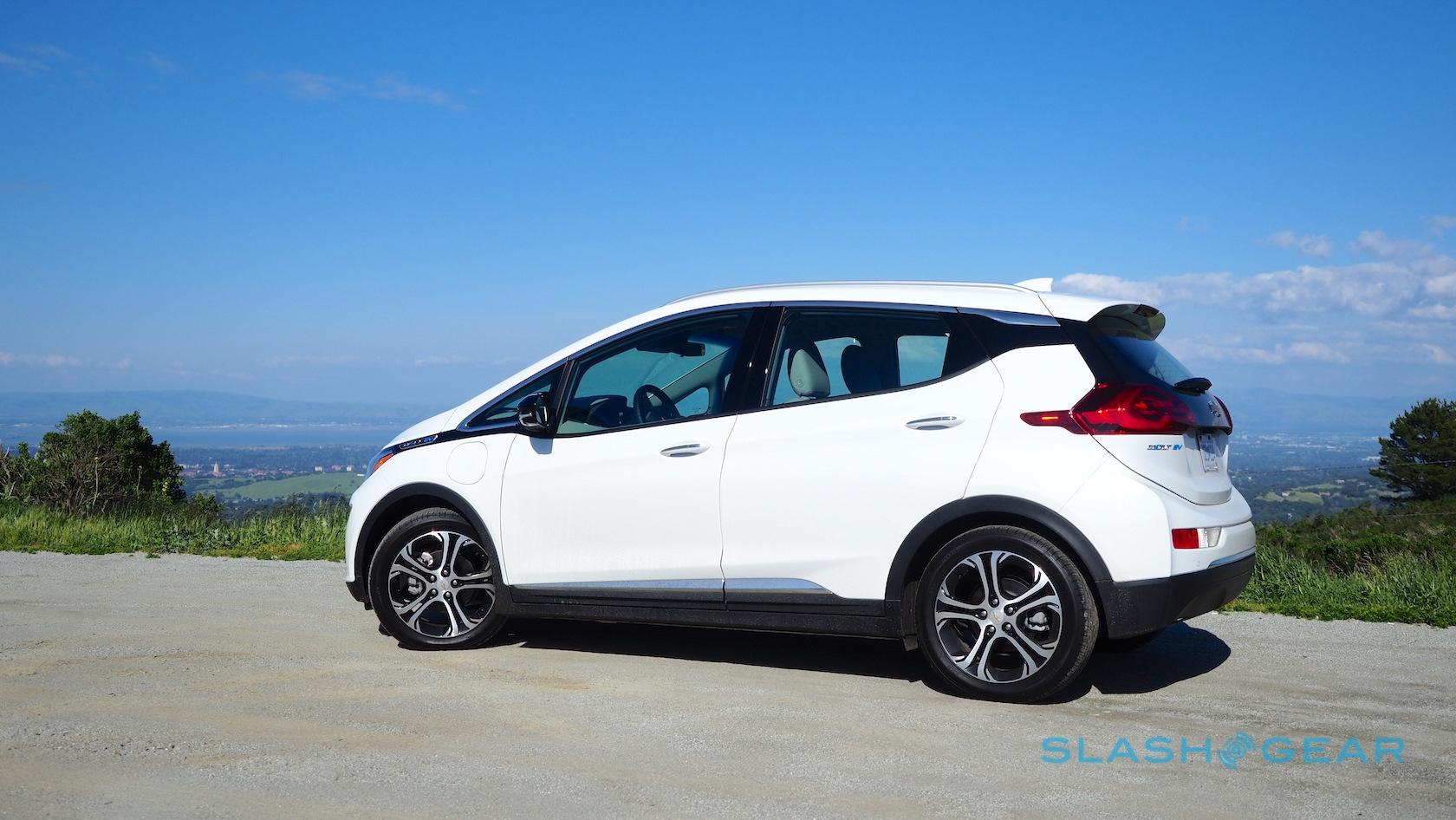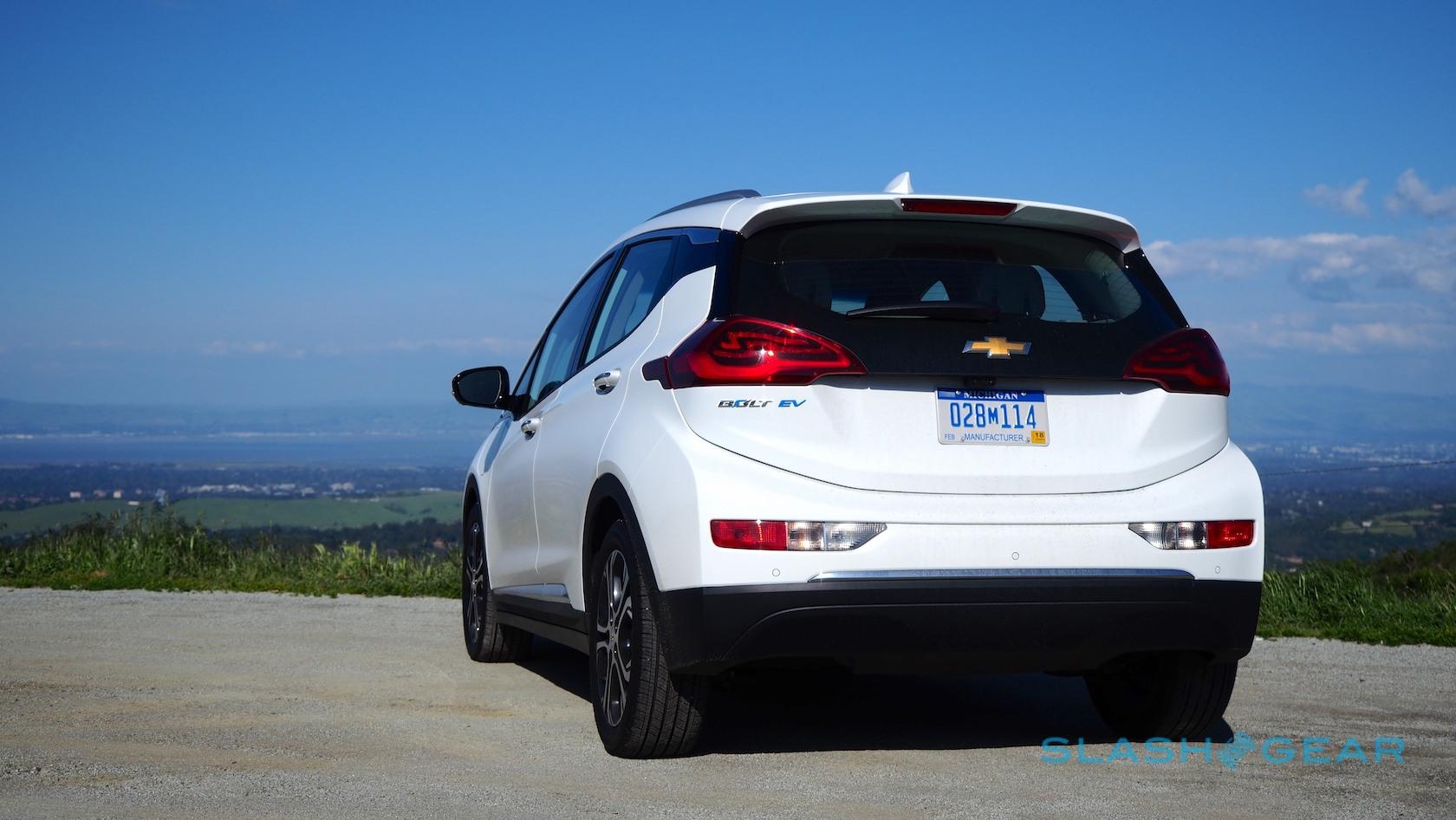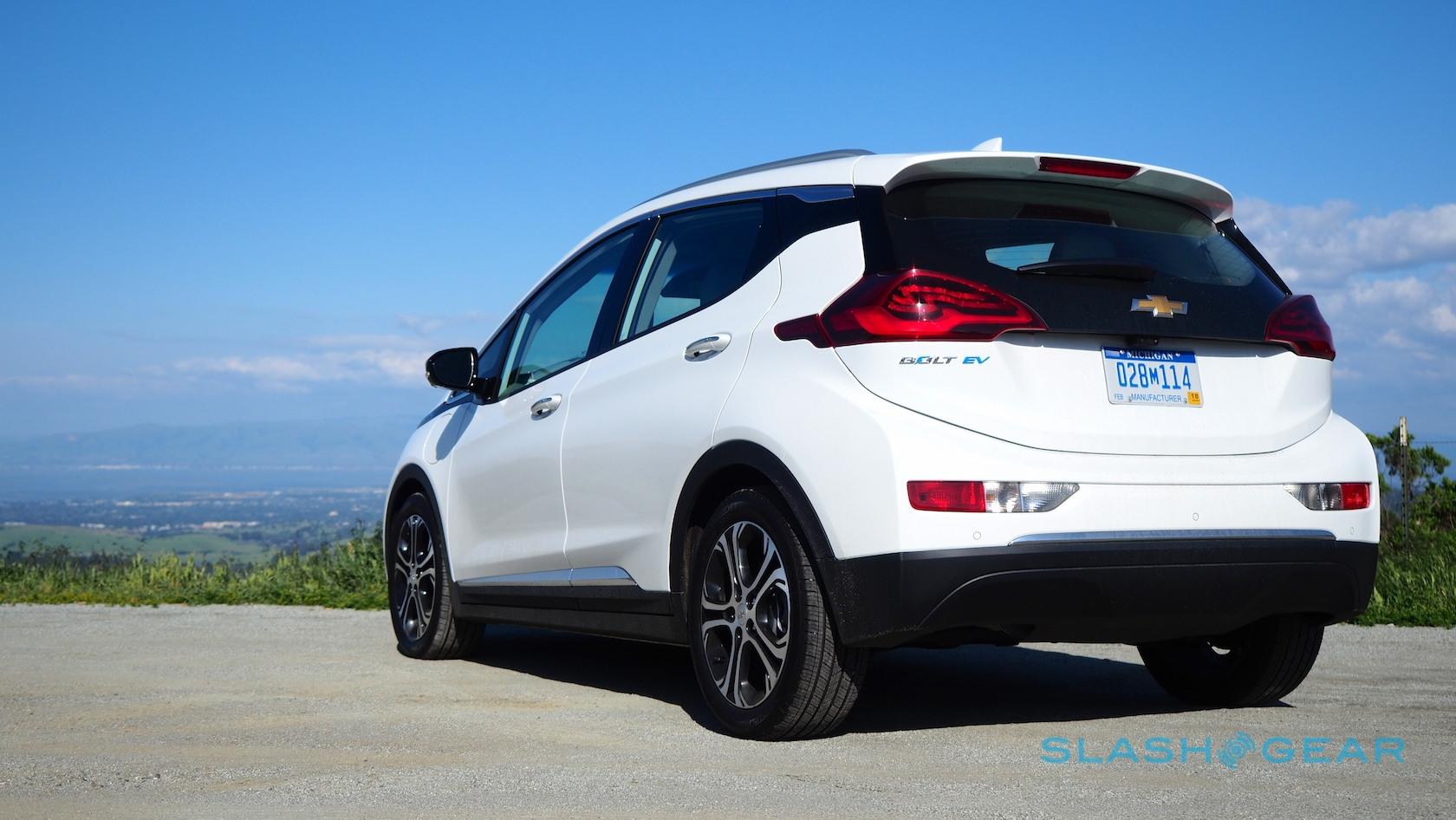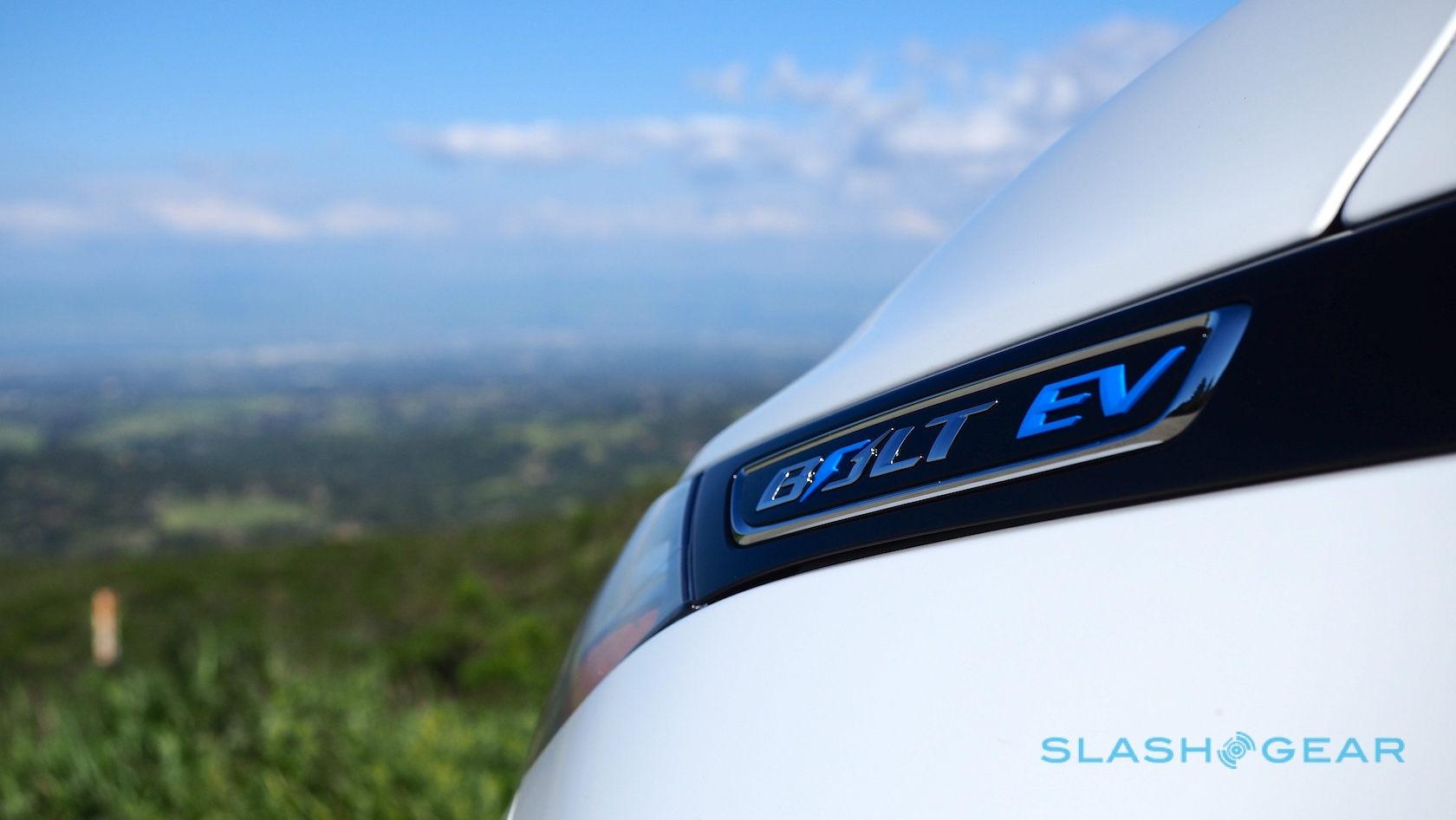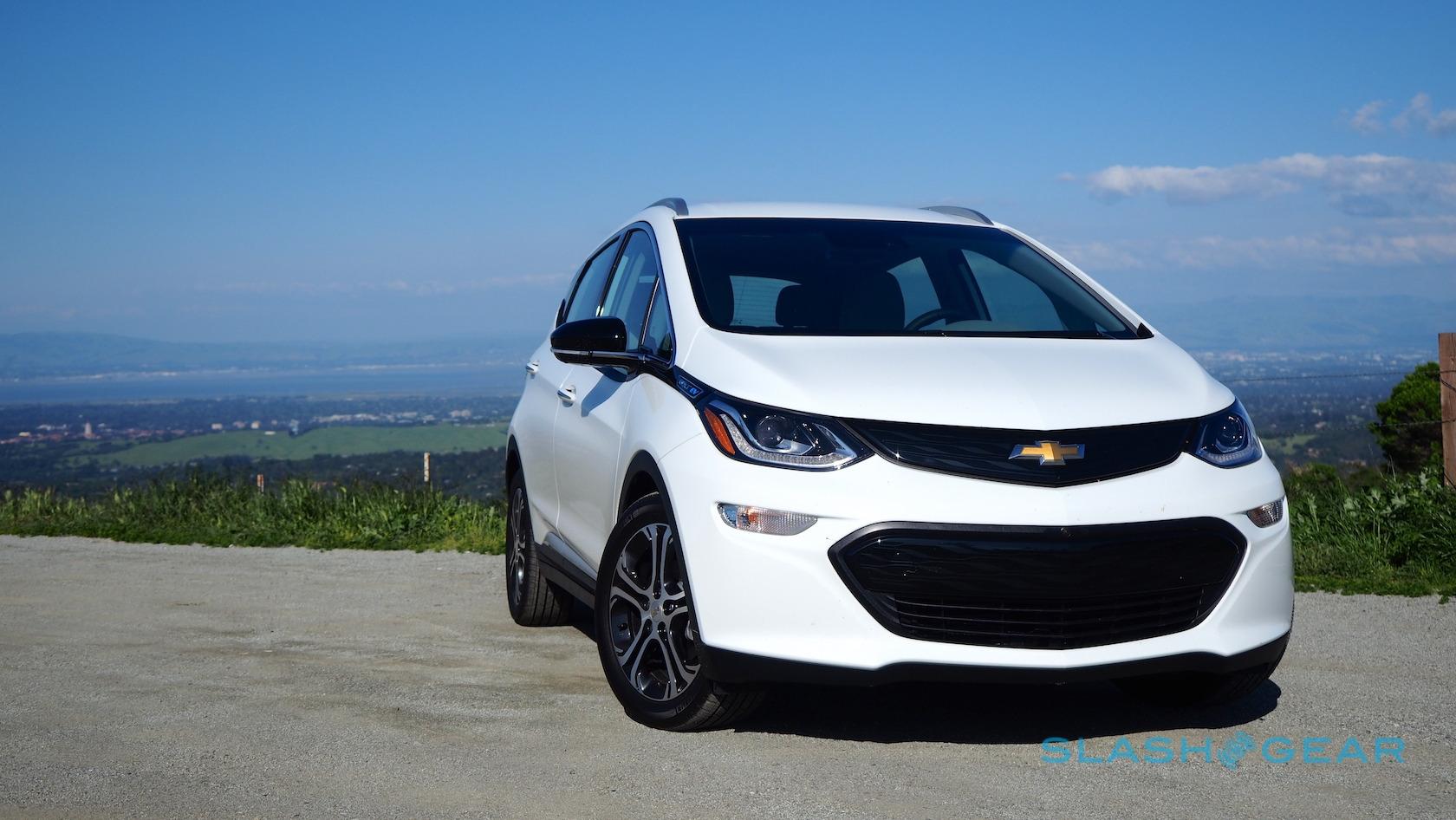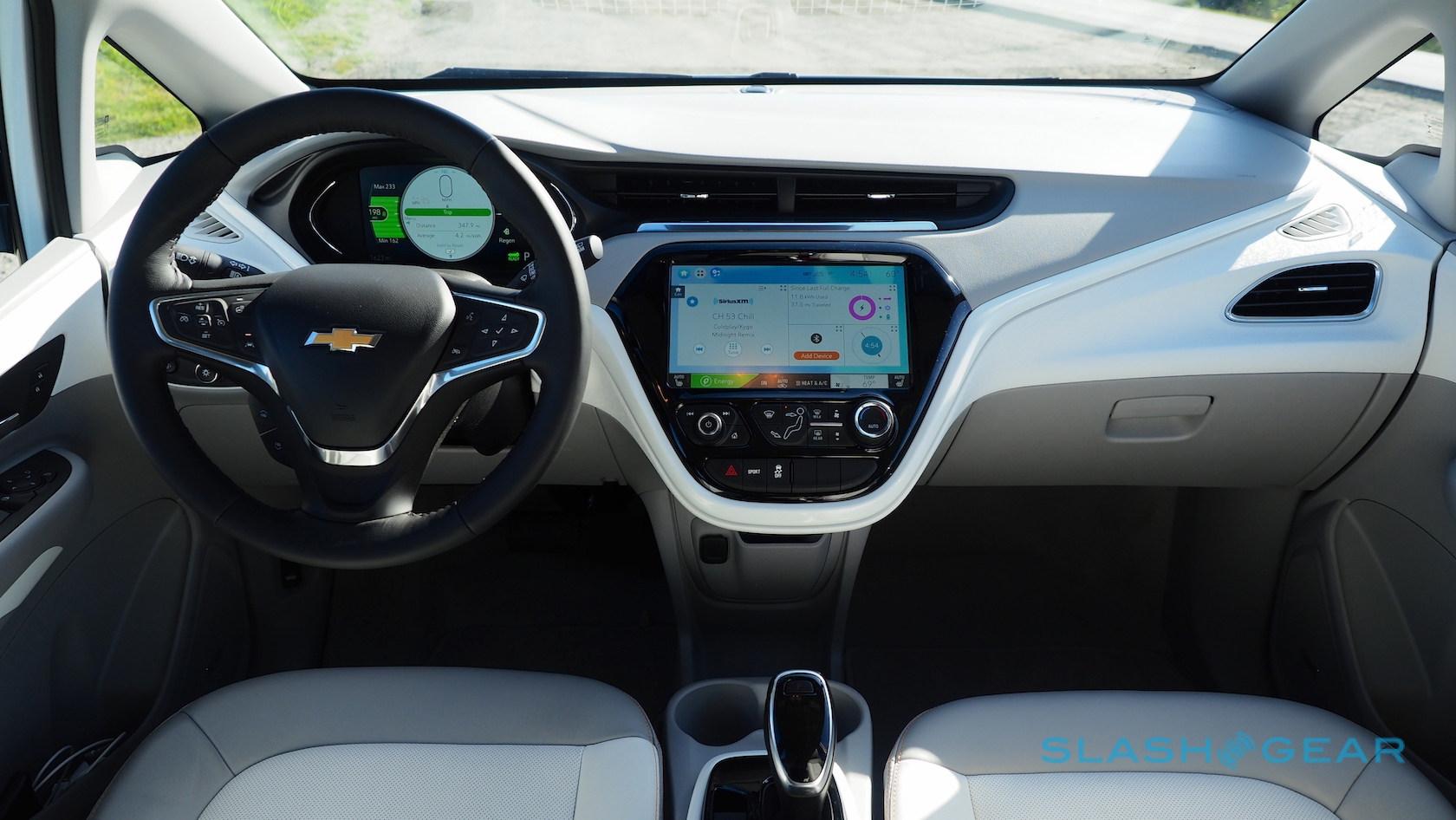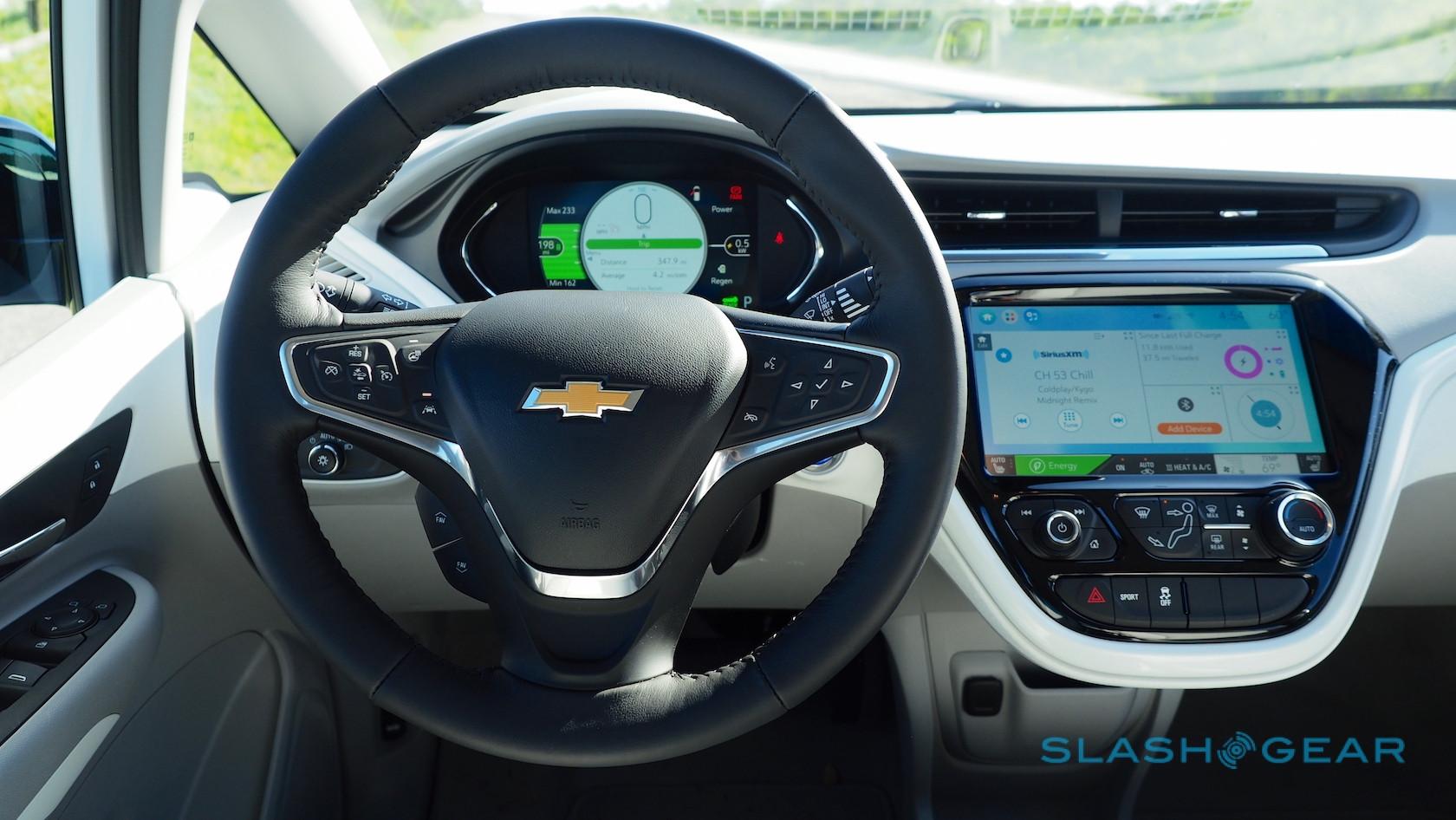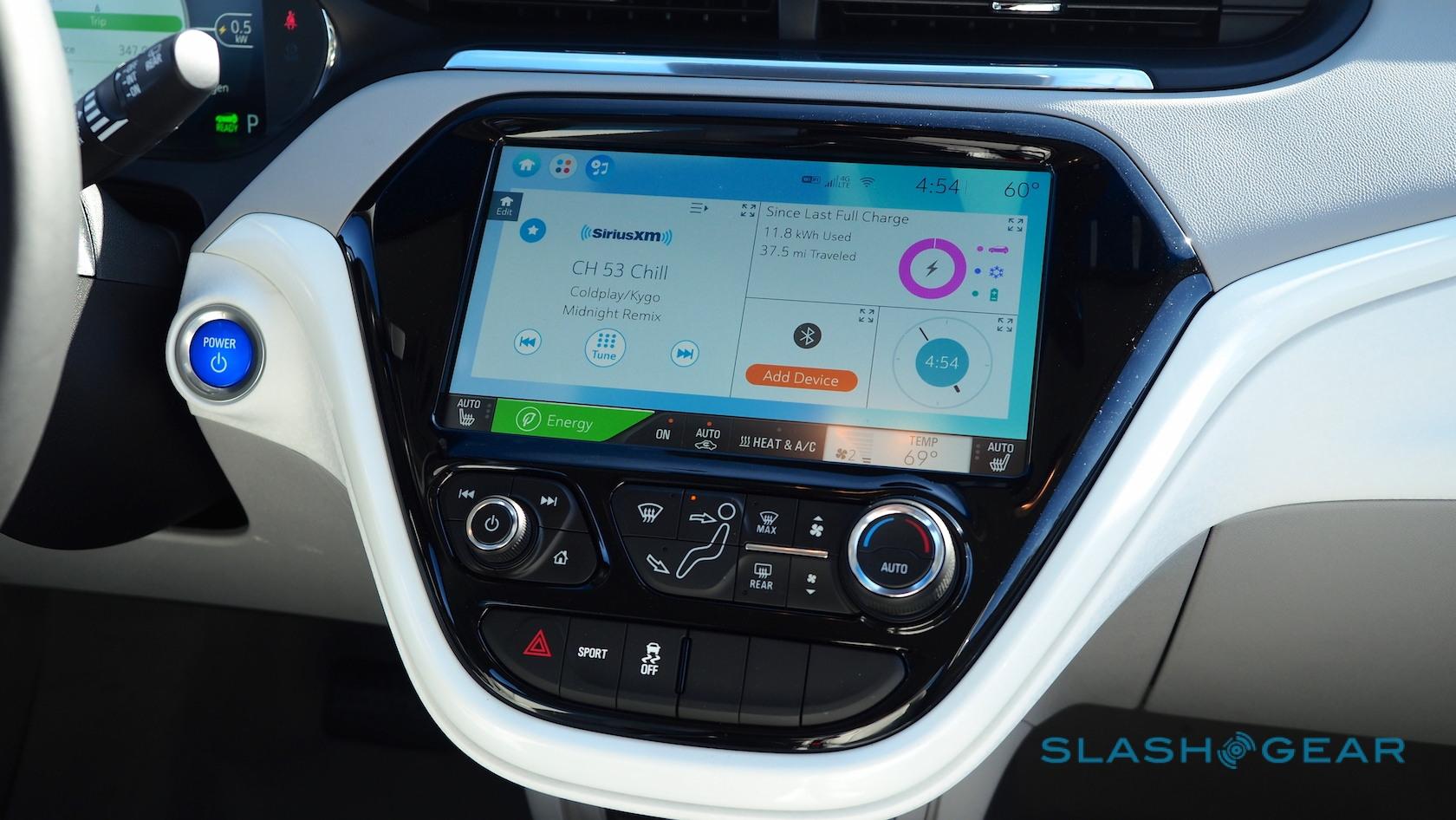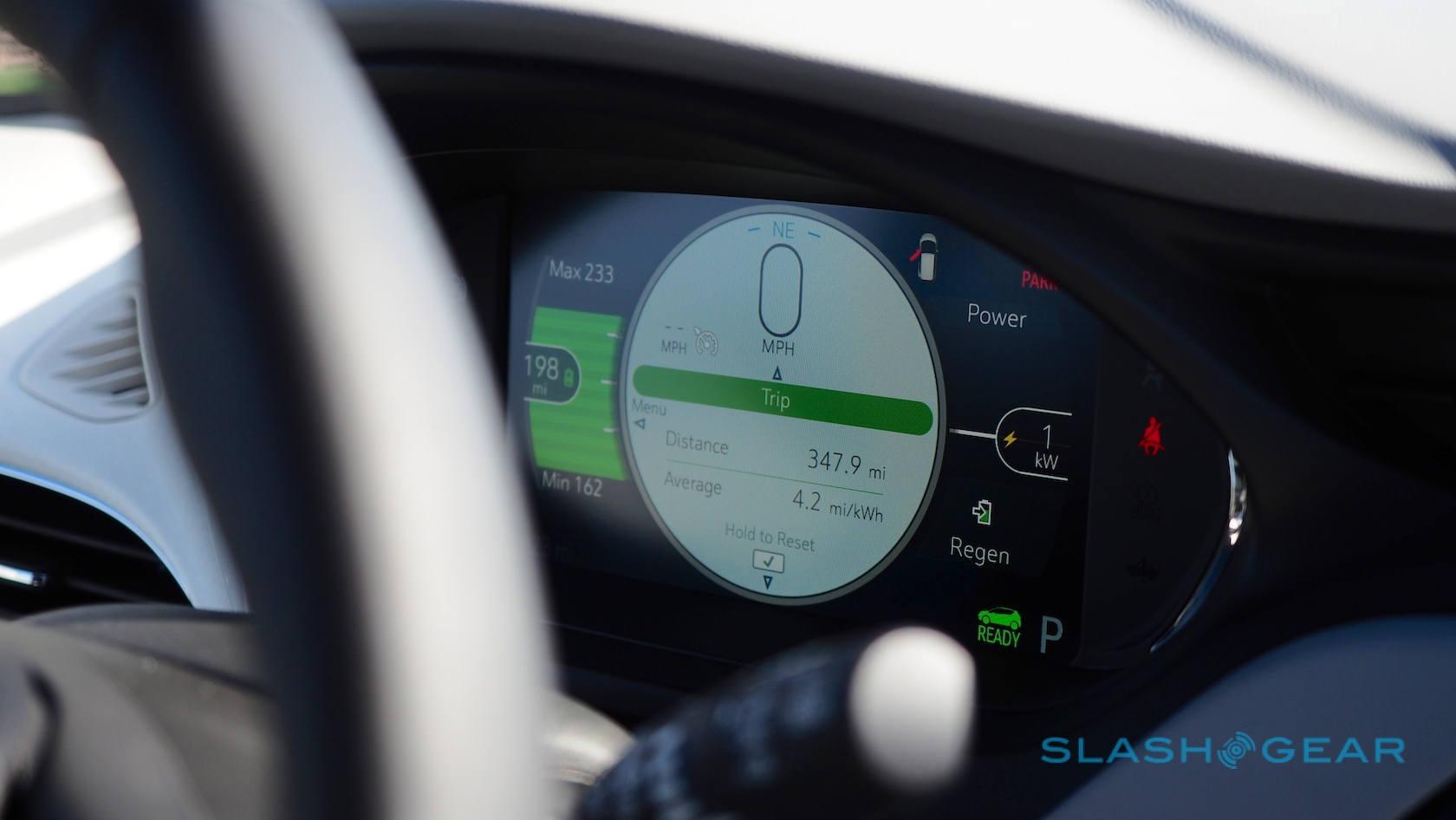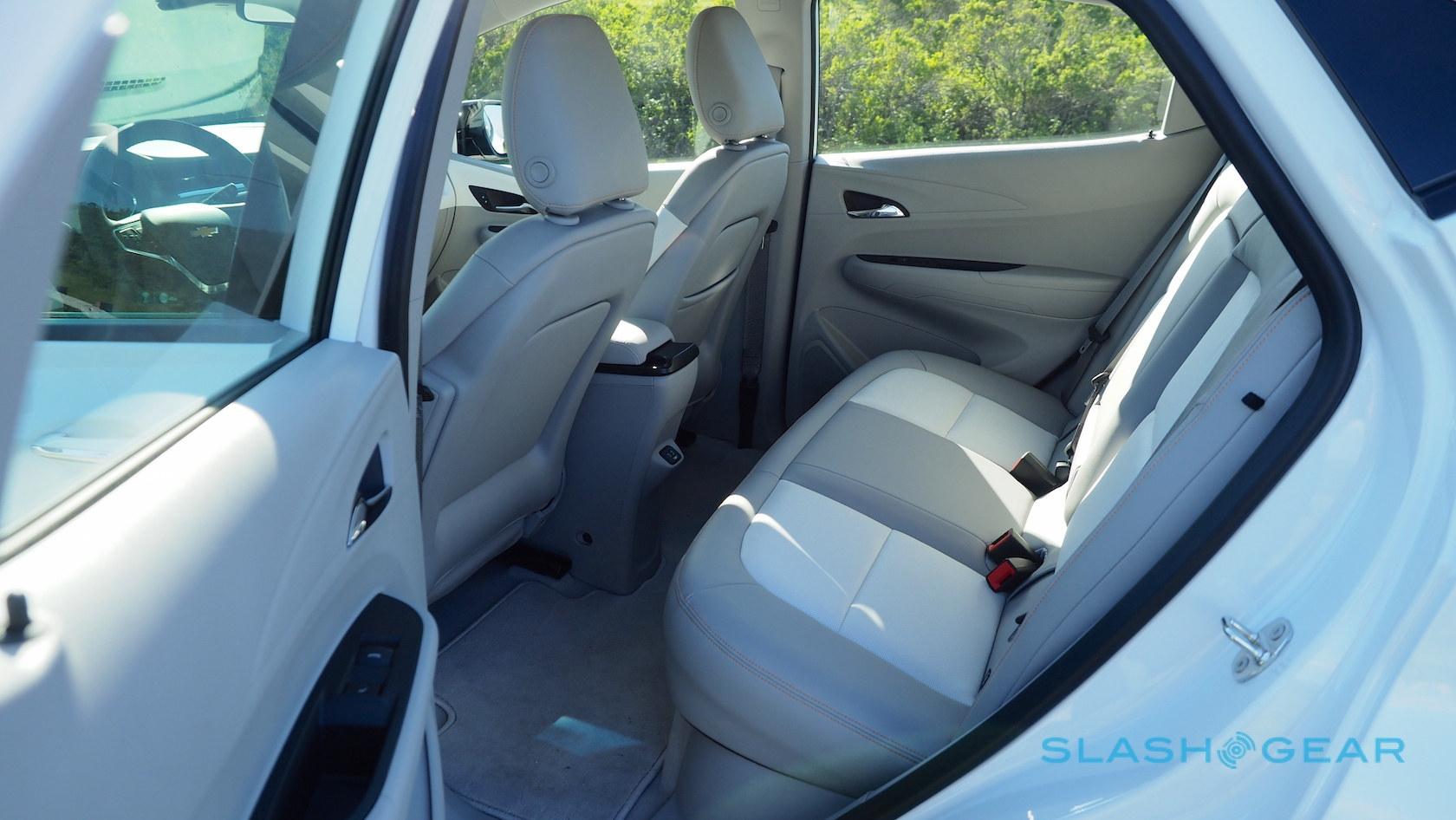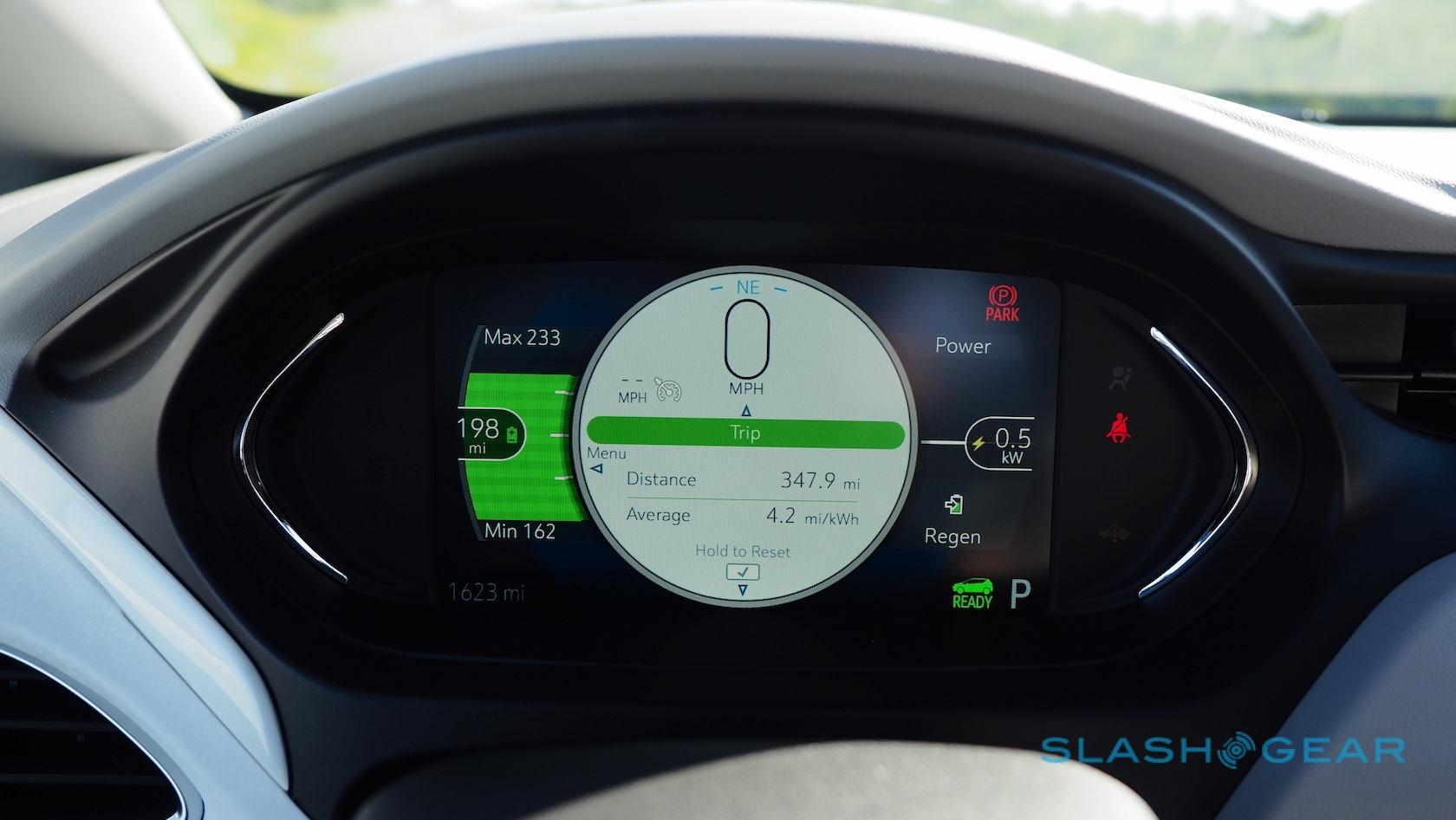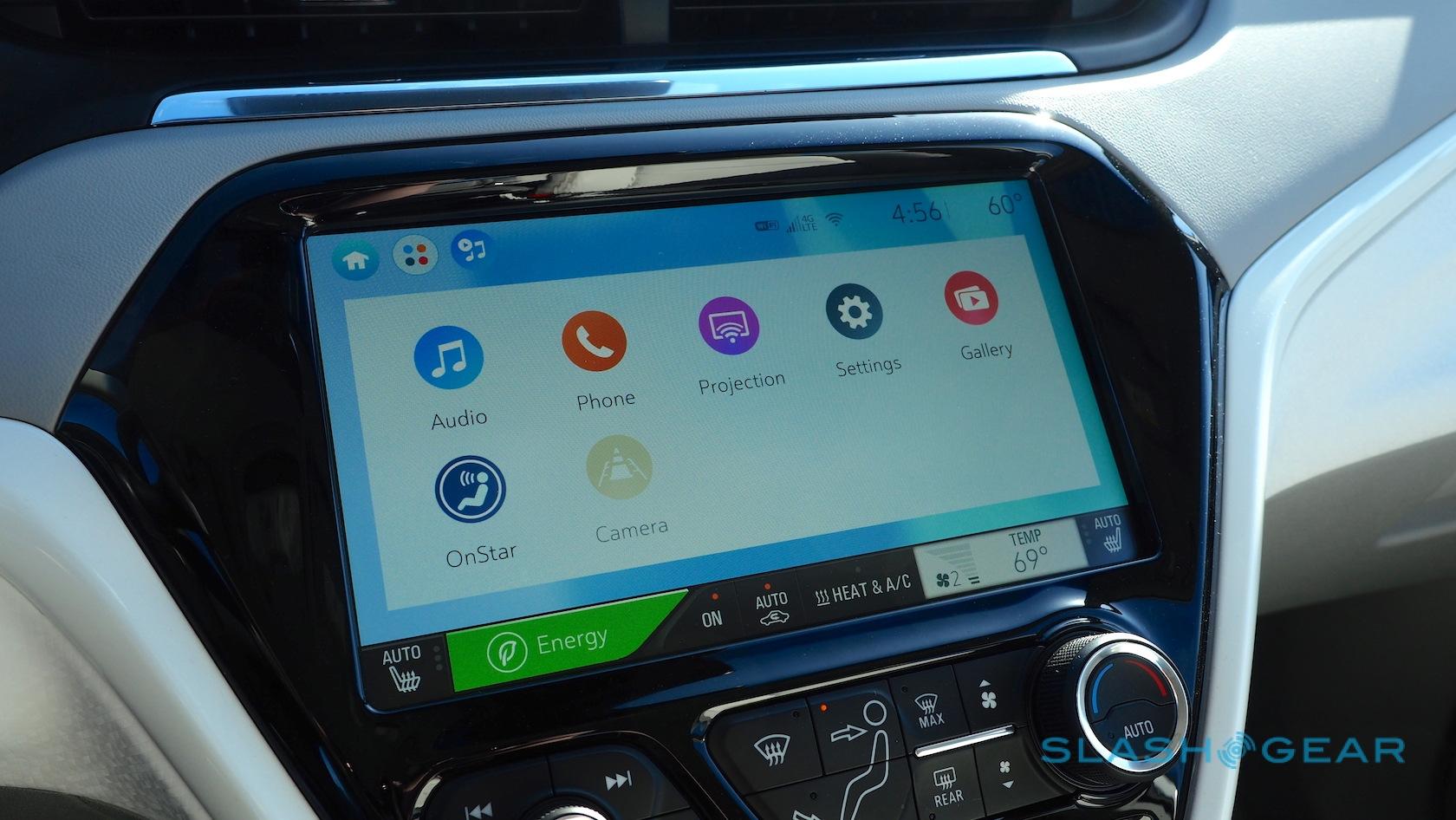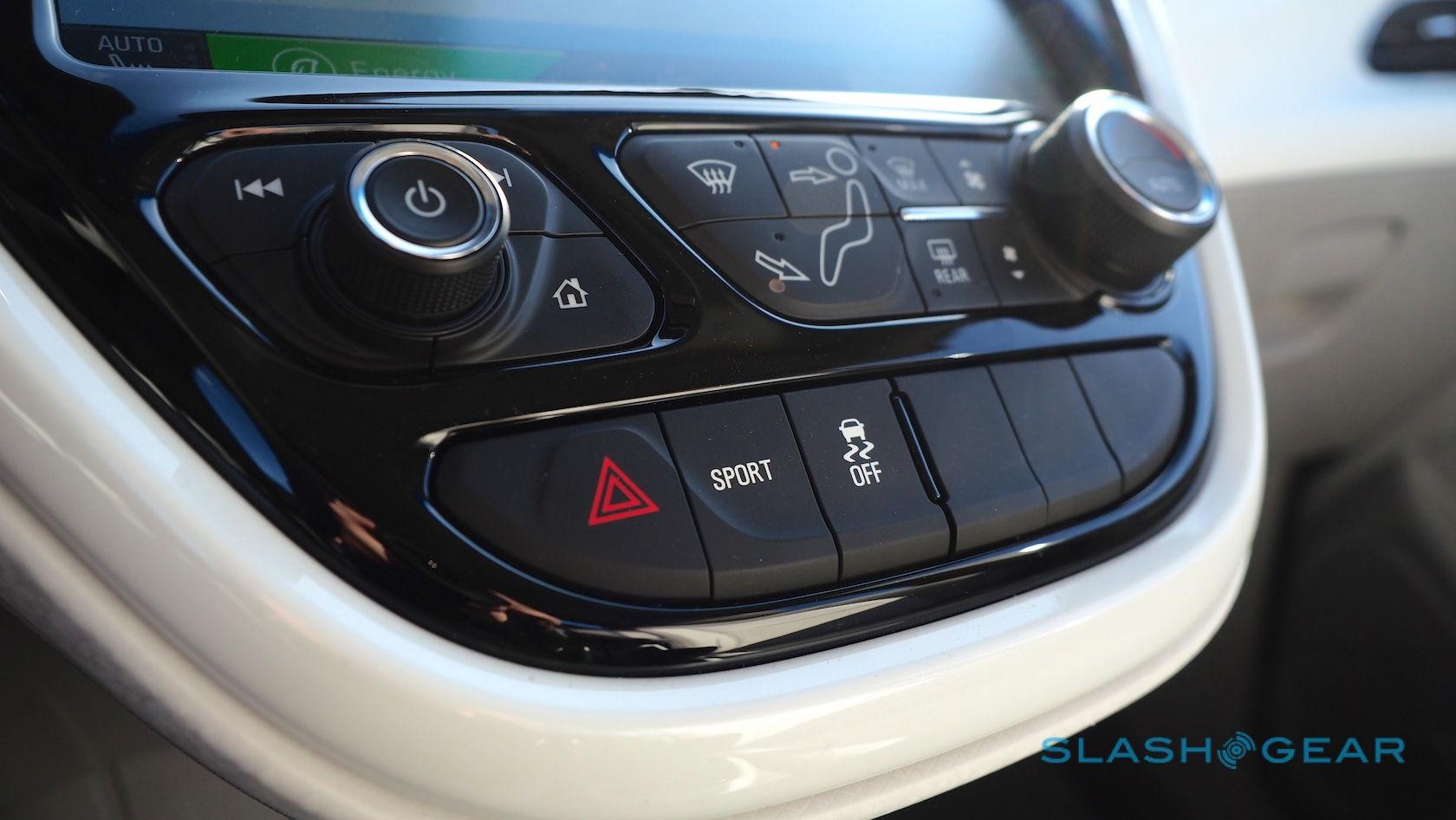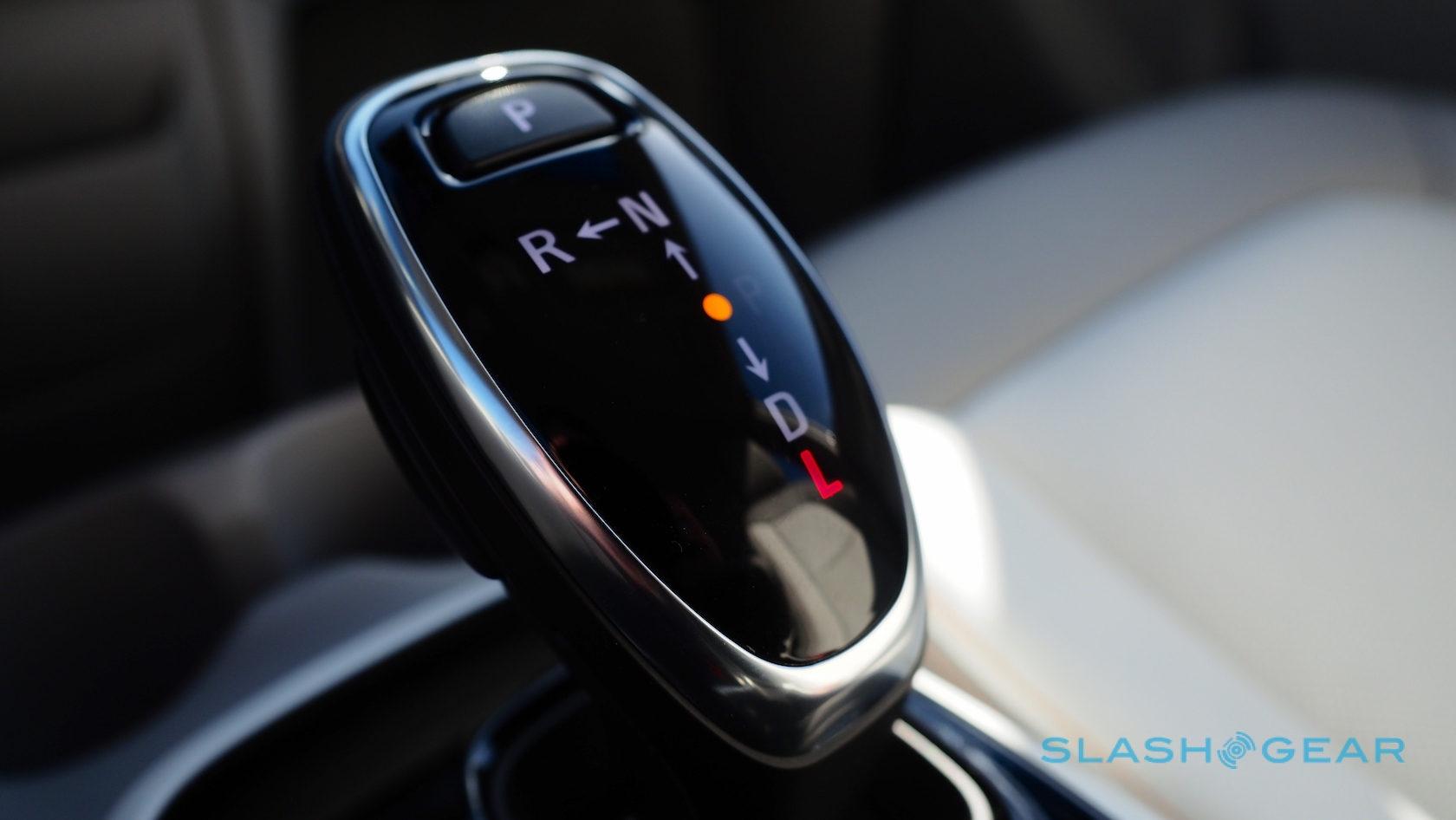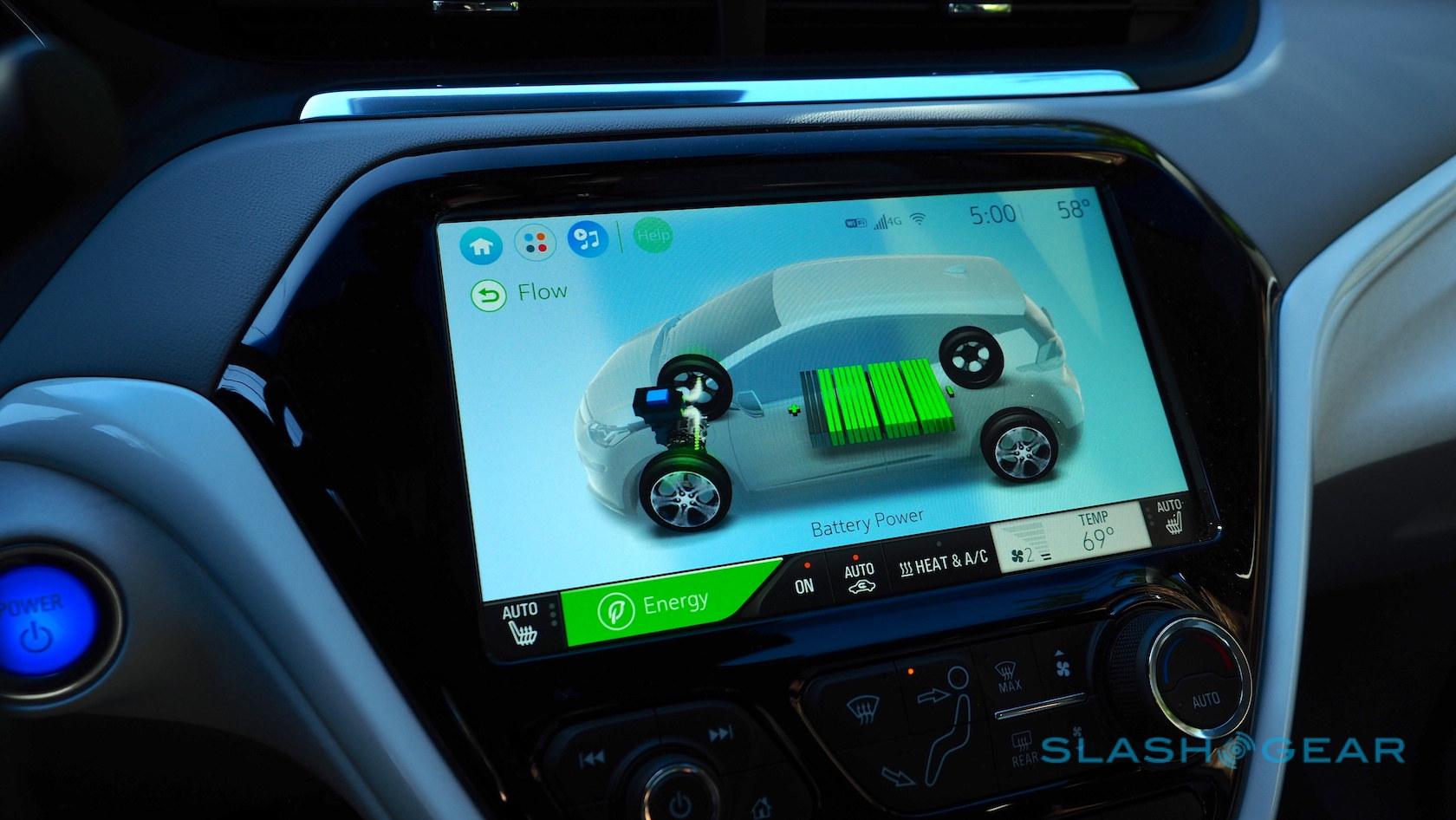2017 Chevrolet Bolt EV Review: Electric All-Rounder
- Better-than-EPA range
- Legitimately rewarding to drive
- Category-beating levels of tech
- Spacious cabin and trunk
- Level 1 charger is a slow way to
- No navigation option
- Tight fit for five people
All it took was one road trip and I was a Bolt EV convert. Chevrolet's all-electric car may not be the automaker's first attempt at the category – and indeed it joins the similarly-named Volt hybrid on dealership forecourts – nor the first to market, but it's undoubtedly the first that feels ready not only for electric early-adopters but the mass market as a whole. With range that punches above even the official estimates, an enthusiastic driving style, and that sub-$30k sticker price after subsidies, there's plenty here to like.
The Bolt EV's styling has proved divisive. Maybe it's from growing up in the UK, where hatchbacks are far more common, but I like Chevrolet's upright design. Others have complained it looks a little too mainstream, though I suspect that's intentional so as not to scare off new drivers.
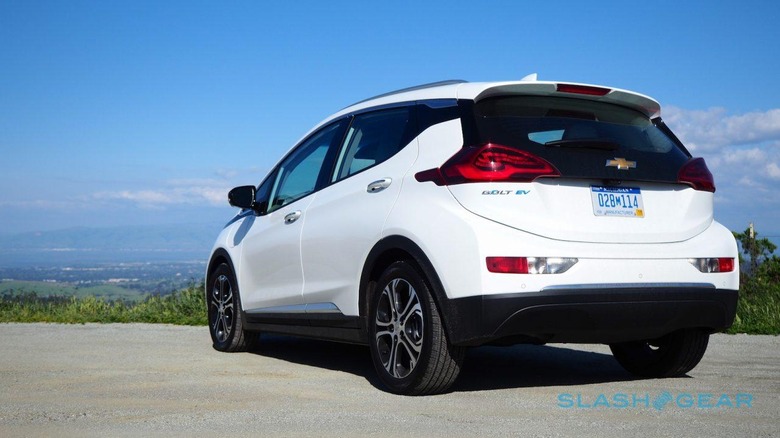
My friend's electric
This may be a small car, but the Bolt EV isn't powered like one. Indeed, with 200 horsepower and 266 lb-ft. of torque, this compact has grunt more akin to a 2.0-liter Malibu than a city runabout. Throw in silky smooth power delivery and a surprisingly settled ride, and you have a car that's unexpectedly rewarding from behind the wheel.
Though there are no gears in the traditional sense, you do have two drive modes to choose between. The default is "D" or "Drive", in which the Bolt EV behaves much like a normal, gasoline car. When you hit the brake pedal it uses regular friction brakes, but you can trigger regenerative braking – the car's motor flipping into generator mode, converting energy back into battery power – by pulling the paddle on the left of the steering wheel.
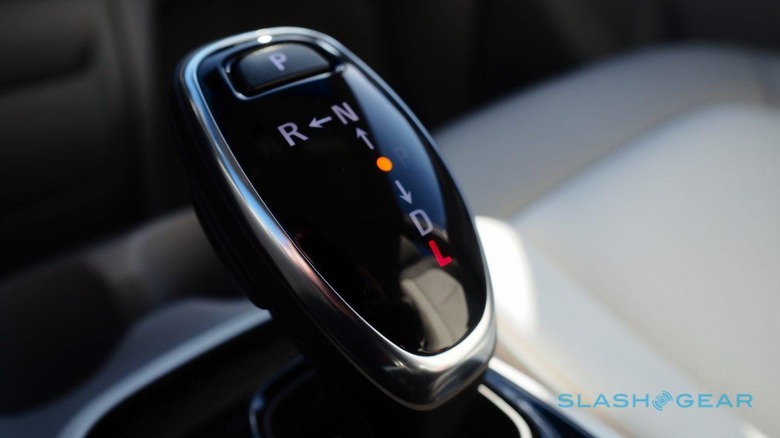
Alternatively there's "L" or "Low" mode. Then, when you lift off the accelerator there's far more aggressive regenerative braking: enough, in fact, to bring the Bolt EV to a complete stop. The traditional brakes – and the regen paddle – still work, but you can feasibly drive with a single pedal. It takes a little getting used to initially, and can be somewhat jerky until you get to grips with the switchover between power and battery replenishment, but after a few miles it's a revelation in convenience.
Interestingly, Chevrolet tells me the EPA mileage figure is based on driving the Bolt EV in its regular, "Drive" mode. That means, with the more urgent regenerative braking when in "L" mode, you'll probably see even greater range. Unfortunately, there's no way to set the car to always start in "L" rather than "D", which the automaker tells me is by design: it wants the Bolt EV to be as predictable in its driving style for early EV converts as possible.
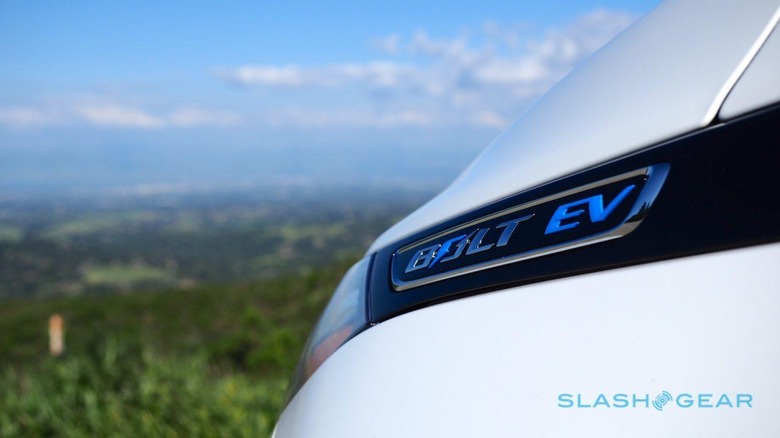
Really, though, you're missing out if you don't tug the gear shifter back twice each time. The Bolt EV thrums off the line with a perkiness that can quickly outpace its gas-powered counterparts. No, the 0-60 mph time of 6.5 seconds isn't going to win any drag race awards, but with the plentiful torque kicking in instantly it's a legitimately eager car at city speeds. More than enough, indeed, to make the most of small gaps in traffic as you dart nimbly from lane to lane.
The low center of gravity helps, there, with the 60 kWh battery pack slung low under the Bolt EV's floor. Again, this is no Tesla Roadster, but the handling is more planted than most compact cars I've tried. Think "supercharged golf cart joyride on public roads" and you're along the right lines.
Cabin and technology
The Bolt EV bucks the trend for dark dashboards, with Chevrolet opting instead for white and pale grey tones that leave the cabin feeling airy and spacious. It's not just in your mind, though, and there's plenty of room for four adults, including head-room in the back. Things get a little more cramped with a fifth person in the rear middle seat.
That rear bench has a 60/40 split, folding down to expand the trunk from its usual 16.9 cubic-feet to as much as 56.6 cubic-feet. Since the battery pack is elsewhere, cargo space doesn't suffer. There are a reasonable number of cubbies and cup holders in the cabin, too.
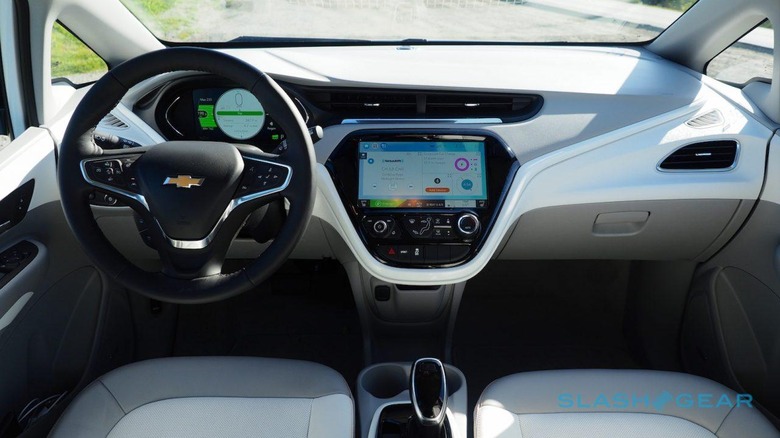
The driver gets an 8-inch LCD for instrumentation, with a choice of three layouts. Chevrolet calls them "Classic", "Modern", and "Enhanced" but really they differ by how granular the power data is they show you. At one extreme, your frugality (or otherwise) is shown with a simple leaf meter; at the other, you get a real-time readout of how many kilowatts are currently being expended. The Bolt EV also uses a color-coded ring to give a more subtle indicator of how green you are.
A 10.2-inch touchscreen is in the center console, and used for everything from HVAC settings, multimedia, and monitoring energy usage, to accessing the standard-fit Android Auto and Apple CarPlay. You'll want to use one of the latter for directions, since Chevrolet doesn't offer navigation – even as an option. Again, there are different layouts for EV feedback, depending on how in-depth you want to go. You can see the flow of energy into and out of the batteries with a model of the car, or dig into graphs showing historic and current performance. Happily, there are dedicated controls for volume, track skip, and HVAC settings, which are handy for keeping your eyes on the road when you just want to turn up the heating.
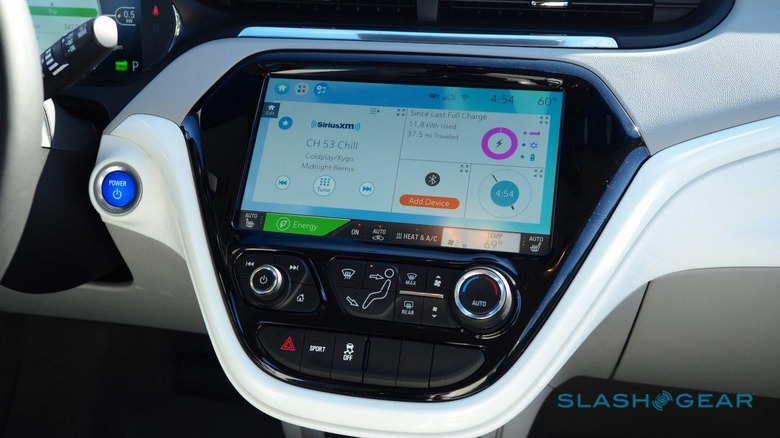
Chevrolet offers two trim levels. The 2017 Bolt EV LT is the entry-level model, and gets a reversing camera, keyless entry/start, auto headlamps, power window, twin USB charging ports, XM radio, and OnStar 4G LTE with WiFi hotspot as standard. It's $36,620 plus $875 destination, but before any federal and state electric car credits. Premier trim throws in leather seats – heated front and outboard rear – and a leather-wrapped, heated steering wheel, a 360-degree camera system, blind-spot monitoring and rear cross traffic alerts, rear park assist, a rear camera mirror, and a useful false cargo floor which splits the trunk into two levels, all for $40,905 (plus destination but before credits).
In short, there's a surprisingly large amount of kit for a car in the size category. The only thing I really missed was adaptive cruise control, though the Bolt EV will warn you if it thinks you're about to crash into the vehicle ahead. The ability to plug in a small appliance or laptop charger to a 110V outlet would be great, too, but Chevrolet doesn't offer it.
That big range question
Range anxiety is a big hurdle to get past: it takes one really good journey before the Bolt EV convinces you it has the legs. According to the EPA, Chevy's little electric car will do 238 miles on a single charge. Sure, the research might suggest that the typical commute is a 40 mile round-trip each day, but which of us is truly typical?
I've no doubt that the Bolt EV would suit my typical week, which consists both of working from home and a couple of roughly 80 mile roundtrips into San Francisco and back. Coincidentally, though, the car arrived at the same time as some friends from out of town, and so it was time for a road trip. I must admit, even with the expected drive being within the EPA's figures, my experience of real-world EV range not necessarily living up to what's on paper (or, indeed, shown on-screen when you start the car up) left me a little nervous.
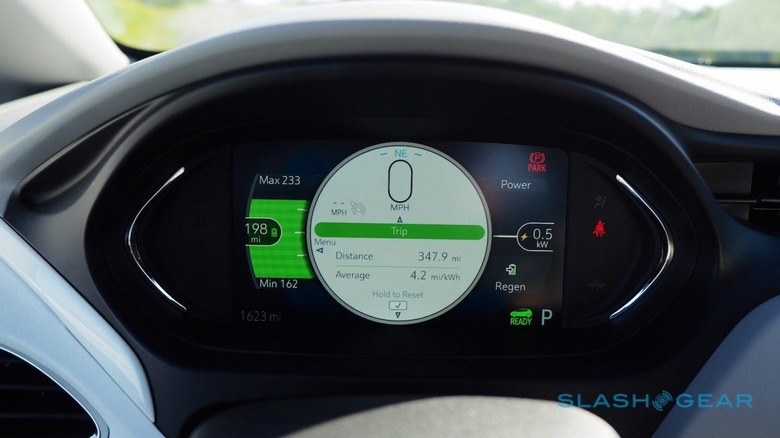
I needn't have worried. Indeed, though I mapped out a few places I could stop for a recharge along the way – warning my passengers that we would be at the whims of lithium-ion – in the end I didn't really need any of them. The day started with a full battery and an estimated 223 miles range on the display, and around 165 miles later was down to half battery and the suggestion that I could drive about 130 miles more. That's with just one hour-long stint on a free Level 2 charger that topped up by approximately 15-20 miles.
Now, admittedly, the California weather helped with that. It was neither too hot nor too cold to require anything other than opening the windows at times, or turning the fan on (which you can do without also switching on the AC or heat) while on the highway. Had we needed to do more with the HVAC, range would have suffered.
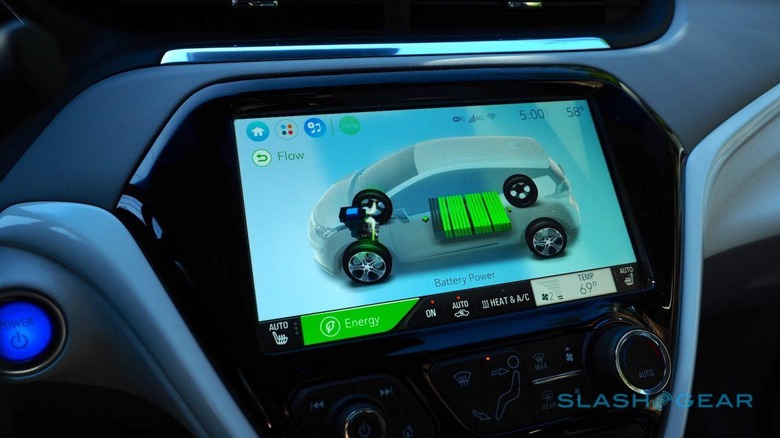
Nonetheless this was no hair-shirt motoring. I did 65-70 mph on the highway, kept pace with traffic on residential and mountain roads, and though I was aware of what was going on with charge levels on the display, I wasn't making an especially conscious effort to change my driving style to be more frugal. It was a pattern that repeated itself for the remainder of my time with the Bolt EV, and any range concerns were quickly forgotten. On the couple of times I was feeling particularly profligate, the Sport mode helped me burn through a few extra kilowatts with faster pick-up and a more sensitive accelerator.
Charging-up
As standard, Chevrolet fits the Bolt EV with a 7.2 kW onboard charger. To make the most of it at home, you'll need a Level 2 charger in your garage; you can figure on adding around 25 miles of range per hour the car is connected. If you don't have a Level 2 charger, there's a standard 120V charge cord in the trunk. That will plug into any regular outlet, which is convenient, but is much slower: about four miles of range per hour.
In practice, I found Chevrolet's estimates fairly accurate. At home, I have an outdoor outlet but it's only 120V, and sure enough with the battery halfway depleted when I plugged the Bolt EV in at around 7pm, it warned me it would be well into the following afternoon before the car would be fully charged again. With the MyChevrolet app you can remotely check battery status; there's also a green LED on the dashboard which flashes to give a rough guide to how far along the process is.
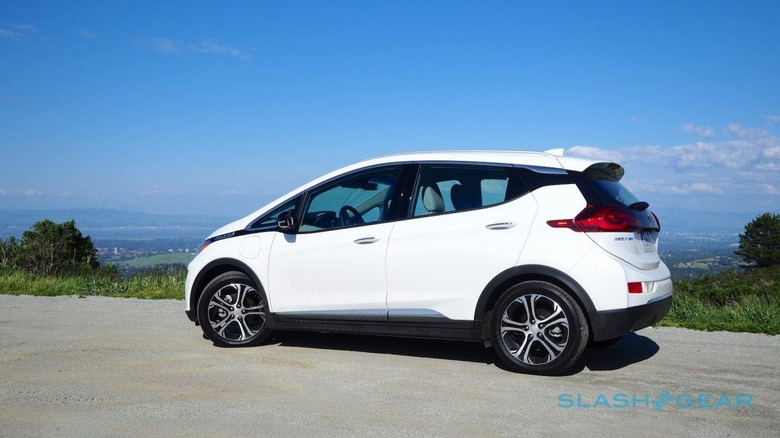
There's a third option, though, and that's DC Fast Charging. It'll cost you $750 more, but it means that, with a compatible charger at least, you can add around 160 miles of range in an hour. You can't get a DC Fast Charger for domestic use, though they're gradually showing up at public stations.
Unfortunately, despite trying to hunt them down using the handy PlugShare app, I never ended up close enough to a DC Fast Charging station to try it out. That's the reality of the public charging network right now: most of the time, you're looking at some sort of Level 2 option, and your rate of charge there will vary according to the power of the individual charger and whether there are other vehicles using it at the same time.
You can get fairly smart with your charging, too. By default, the Bolt EV begins sucking juice as soon as you plug it in; however, you can set it to run on a certain schedule, so as to take advantage of lower overnight rates. Using GPS, the car can tell if you're at home, too: it'll follow the schedule when you are, but start charging immediately when you're away. Cabin pre-conditioning allows you to tell the Bolt EV when you're next going to leave, and have the air-conditioning or the heating come on beforehand, while the car is still plugged in. That way, you're not wasting battery when you're actually underway.
Bolt EV or Tesla Model 3?
Chevrolet's most obvious competitor for the Bolt EV isn't even on sale yet, but that hasn't stopped the Tesla Model 3 from capturing the imagination of affordable EV enthusiasts. Production of Tesla's cheapest car is scheduled to begin later this year, with Elon Musk & Co. having aggressive plans to ramp up output to meet predicted demand. So, many would-be Bolt EV owners have been asking, should I buy the Chevy now or wait for the Model 3?
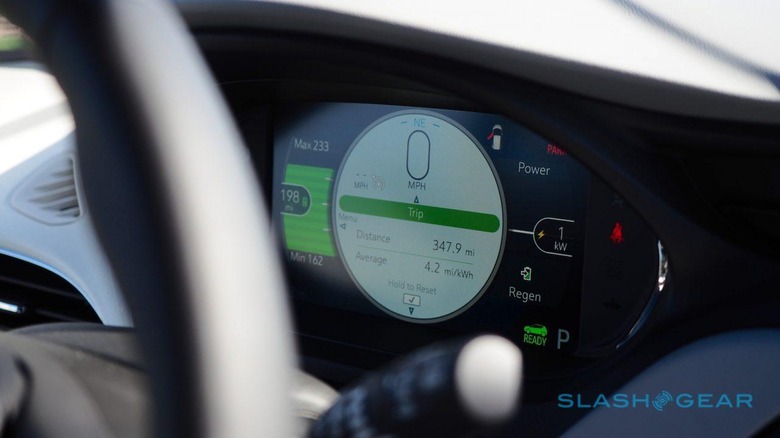
As you might've guessed there's no easy answer, though to some extent it boils down to whether you jumped onto the Tesla wait-list and, if so, how quickly you did so. Several hundred thousand people have put down a refundable deposit for a Model 3; even if only a fraction of those actually place an order, if you're yet to join the list then it could easily be 2019 before you got near the front of the line.
Indeed, you could realistically pick up a Bolt EV on a two or three year lease and be close to the end of that by the time your Model 3 was theoretically ready. It's a different story if you were keen with your Tesla reservation, though final pricing and specifications for the new car are yet to be confirmed. When it does arrive it'll likely put the Bolt EV's gadgetry in the shade, with Autopilot hardware fitted as standard among the geek-friendly abilities the Silicon Valley automaker is now known for, but you may face a not-inconsiderable wait before the Model 3 is ready to show up on your drive.
Wrap-up
Chevrolet, in contrast, is ready to sell you a 2017 Bolt EV today. I'm struggling, indeed, to think of reasons why you shouldn't take advantage of that. My lingering concern with any electric vehicle is that at some point I'll end up out of battery at the side of the road – you can't exactly walk to the nearest power station and come back with a bucket of electricity – but the Bolt EV's range is more than sufficient to even go a few days without a charge and still not leave you stranded.
238 miles of EPA range can clearly be exceeded with little in the way of on-road compromise, and importantly you don't feel like you're driving a pious eco-mobile. Indeed, getting back behind the wheel of the typical gasoline car, I suspect you'll find yourself wondering where all the vim went. Factor in a comfortable cabin and decent technology, and it's clear that the Bolt EV is no on-trick electric pony but a solid all-rounder.
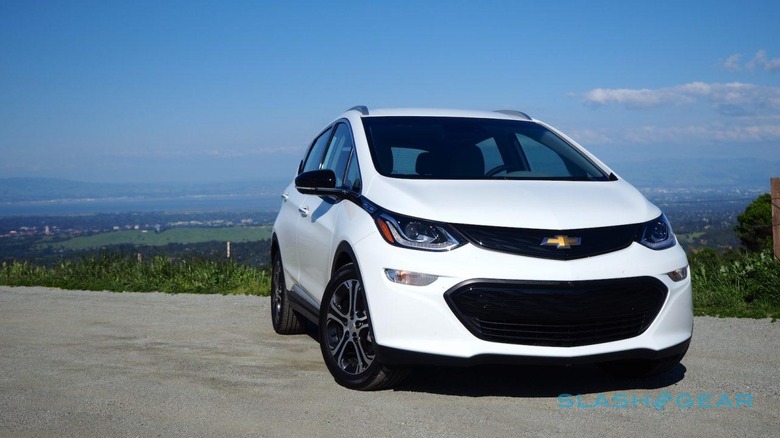
NOW READ: 2017 Chevrolet Volt Review – The secret hybrid
Yes, the public charging ecosystem still isn't as comprehensive as gas stations, and no, not everybody's typical driving needs are yet served by electric cars. The Model 3 is on the horizon, not to mention pure-EVs from a number of other automakers over the next few years. You need a Level 2 charger at home for maximum flexibility.
All the same, the Bolt EV is here now, today. You can get 250+ miles of enjoyable range with space, near-silence, and plenty of gadgets, and courtesy of the federal incentives save $7.5k off the sticker price. It's not just a solid alternative to the gasoline compact cars out there, it's simply better than them.

